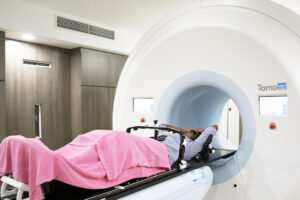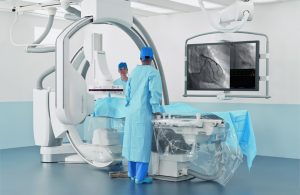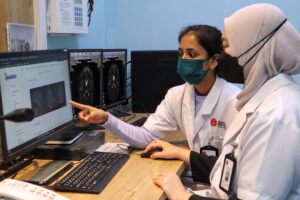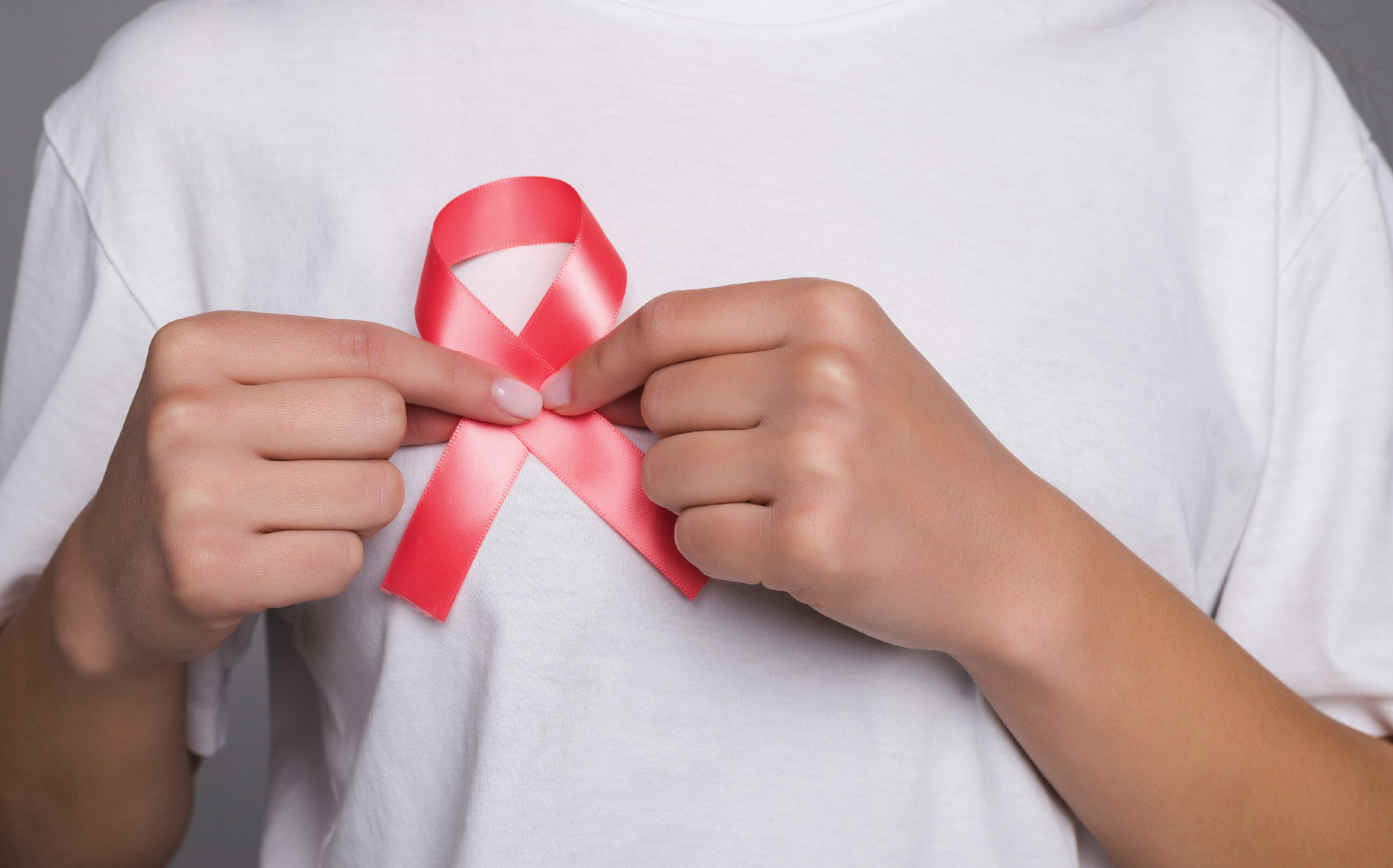What are the key factors that contribute to breast cancer risk, and how can individuals reduce their risk through lifestyle choices?
There are modifiable and non-modifiable factors that contribute to breast cancer:
- Modifiable risk factors are those that can be altered through lifestyle changes. These include nulliparity, lack of breastfeeding, older age at first childbirth (35 years and above), use of oral contraceptive pills, combined hormone replacement therapy in postmenopausal women, obesity, sedentary lifestyle, smoking, and alcohol consumption.
- Non-modifiable risk factors are unchangeable. These are increasing age, female gender, personal or family history of breast cancer, early menarche, late menopause and exposure to therapeutic radiation to the chest at an early age (for the treatment of Hodgkin’s lymphoma).
What are the recommended guidelines for breast cancer screenings, and how effective are they in detecting the disease at early stages?
Screening is done on people without any symptoms. The age to start screening depends on the risk of developing breast cancer.
For women who are high risk (those with a known personal or family history of BRCA gene mutation or inherited cancer syndromes, strong family history of breast or ovarian cancer, and a history of chest radiation at a young age), annual MRI breast is recommended at the age of 30-49 years, annual mammography from age 40-69, and a mammogram every 3 years from age 70 onwards.
For women with moderate risk (those with a family history of breast cancer in a first-degree relative but do not have a genetic syndrome), screening mammography should be performed annually from age 40-49 years and annually or biennially from age 50-59 and every 3 years from 60 onwards.
For women with average risk (absence of any factors), screening mammography is recommended for women aged 50-74 years and is performed every 2 years.
Screening not only plays a major role in detecting cancer in the early stage but also enables detection of pre-invasive lesion where cancer has not yet developed. At the early and pre-invasive stages, a cure is definite.
Are there any new technologies or techniques in breast cancer detection that show promise in improving early diagnosis?
Mammography is the best-studied and the only imaging modality that has been shown to reduce breast cancer mortality.
Digital breast tomosynthesis (DBT) is a new screening and diagnostic breast imaging tool shown to improve the rate of early detection of breast cancer.
Therefore, digital breast tomosynthesis is recommended in the screening and diagnosis of breast cancer, but its usage is limited by its availability.
What are the challenges or barriers that prevent certain communities from accessing breast cancer screenings and healthcare resources, and how can these be addressed?
Lack of awareness on screening guidelines and purpose of screening is a significant reason that hinders women from getting screened. A study conducted on Malaysian women revealed that 7 out of 10 women believe that breast cancer screening should only be pursued when they experience symptoms.
Women in the lower socioeconomic and education group has lower attendance in screening mammograms.
Emotional and financial barriers, such as the fear of diagnosis and losing a breast, as well as concerns about the associated costs, are commonly reported obstacles to screening.
To improve screening behaviour and promote early detection, it is essential to identify and address negative beliefs, raise awareness, and provide knowledge about breast cancer through effective public health strategies. By doing so, we can enhance screening rates, ultimately leading to earlier detection, improved treatment outcomes, and increased survival rates for breast cancer patients.
Can you provide examples of successful community programmes or initiatives that have effectively promoted breast health education and early detection?
The Breast Cancer Welfare Association (BCWA) of Malaysia is an NGO dedicated to providing breast health education and breast cancer screening services to women in the community.
To make mammograms more accessible, the Ministry of Women, Family, and Community Development offers an RM50 subsidy for eligible women.
The National Cancer Society Malaysia conducts a Free Community Outreach Programme that provides free screening to underprivileged communities, further supporting early detection efforts.
The Mammogram Subsidy Programme, initiated by the Government, promotes early detection of breast cancer by offering women the opportunity to have mammograms at registered private mammogram centres associated with Lembaga Penduduk Dan Pembangunan Keluarga Negara (LPPKN).
How can individuals become more proactive in monitoring their breast health and performing self-examinations? What are the key signs and symptoms to watch out for?
Women need to be vigilant abut overall breast health, noticing any abnormalities in their breasts by doing regular breast self-examinations and to seek immediate medical attention.
Are there any specific lifestyle changes or habits that have been shown to reduce the risk of breast cancer? How can these be incorporated into everyday life?
Recent reports indicate that successful lifestyle modifications can potentially prevent 25-30% of breast cancer cases. These lifestyle changes includes making dietary adjustments, smoking cessation, abstaining from alcohol consumption, maintaining a healthy weight, and adopting an active lifestyle that involves regular physical exercise.
What role does genetic testing play in assessing breast cancer risk, and how can individuals make informed decisions about genetic testing?
Genetic testing aims to identify cancer predisposition genes. Individuals with pathogenic/likely pathogenic variants in BRCA1 and BRCA2 face an increased risk of breast, ovarian, and other related cancers. In cases where the BRCA gene is mutated, the lifetime risk of developing breast cancer is 45-85%, and for ovarian cancer, it is 10-45%.
Women with a strong family history of breast and/or ovarian cancer, who are concerned about hereditary breast cancer, have the option to undergo genetic testing. Individuals would need to pre-test counselling and post-test counselling. If an individual is found to have pathogenic/likely pathogenic BRCA1 and BRCA2 genes strategies such as screening, risk-reducing surgeries would be offered.
Are there any disparities in breast cancer survival rates based on socioeconomic factors or access to healthcare? How can these disparities be addressed to ensure equal outcomes for all?
Data compiled by Cancer Research Malaysia (CRM) reveals that high-income breast cancer patients in Malaysia have a survival rate of over 90%, whereas low-income patients have a survival rate of 65%. In general, low-income patients are nearly twice as likely to succumb to breast cancer each year, primarily due to delayed diagnosis and limited access to treatment.
Improving public healthcare funding to extend the availability of targeted therapy for low-income patients in need will significantly enhance breast cancer outcomes in this group.
by Dr Ina Shaliny A/P Duraisamy, Consultant Oncologist





